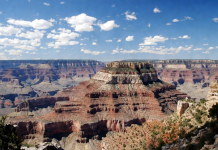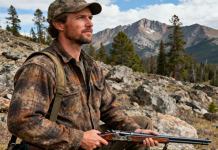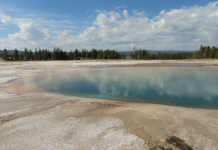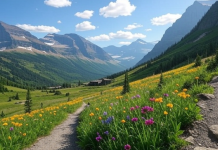” … these bear being so hard to die reather intimedates us all; I must confess that I do not like the gentlemen and had reather fight two Indians than one bear.”
Captain Lewis May 11th 1805 (Corps of Discovery)
Seems that there have been quite a few bear sightings around Cascade County of late. People have been collecting video and trail cams are taking pictures of Grizzly bears roaming about in places as close as Ulm and as far away as the west side of Cascade , and reports of the Grizzly roaming the fields between Simms and Fort Shaw.
I’m not sure if folks know this or not, but we happen to be living right in the middle of bear country. The northern plains have been the natural habitat for the Grizzly bear for hundreds of years.
These bears just didn’t suddenly appear — they’ve always been here — traversing the river bottoms and coulees for years.
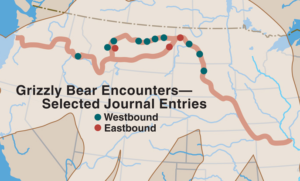
The Lewis and Clark expedition first encountered the (white bear) Grizzly as far east as eastern South Dakota back in the day.
On 7 October 1804, at the Moreau River, about 15 river-miles below present Mobridge, South Dakota, the men noticed the first evidence of the presence of a grizzly. Clark wrote: “at the mouth of this river we saw the tracks of white bear which was verry large.”
Meriwether Lewis had his own close call with a grizzly right here in Great Falls back in the day — “In the first moment I drew up my gun to shoot, but at the same instant recolected that she was not loaded and that he was too near for me to hope to perform this opperation before he reached me, as he was then briskly advancing on me.”
Lewis went on to write: “In this situation I thought of retreating in a brisk walk as fast as he was advancing untill I could reach a tree about 300 yards below me, but I had no sooner terned myself about but he pitched at me, open mouthed and full speed. I ran about 80 yards and found he gained on me fast. . . . The idea struk me to get into the water to such debth that I could stand and he would be obliged to swim, and that I could in that situation defend myself with my espontoon. Accordingly I ran haistily into the water about waist deep, and faced about and presented the point of my espontoon. At this instant he arrived at the edge of the water within about 20 feet of me. The moment I put myself in this attitude of defence he sudonly wheeled about as if frightened, ? retreated with quite as great precipitation as he had just before pursued me.”
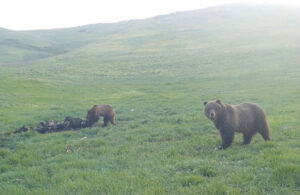
According to Lewis, the bear had done what we might now refer to as a bluff charge.
Grizzly bears are the masters of the river bottoms — River bottoms are the main transportation corridors for bears and many other animals around the area. It’s seldom that they would intentionally venture off of their path unless they are disturbed in some fashion. Most often times it’s another bear or some other form of wildlife that causes them to change their course.
As far as bears go, just because we don’t see them, doesn’t mean that they aren’t there.
We might also note that the mating period extends from May to July for the Grizzly and other bears, so it’s likely that we’ll see more bear activity during these months.
According to FWP, avoiding a conflict with a bear is easier than dealing with one.
Since we are living in bear country, the FWP gives some pretty good tips on how to stay safe when you are out and about.
Learn more about bear safety by visiting: https://fwp.mt.gov/conservation/wildlife-management/bear/be-bear-aware

